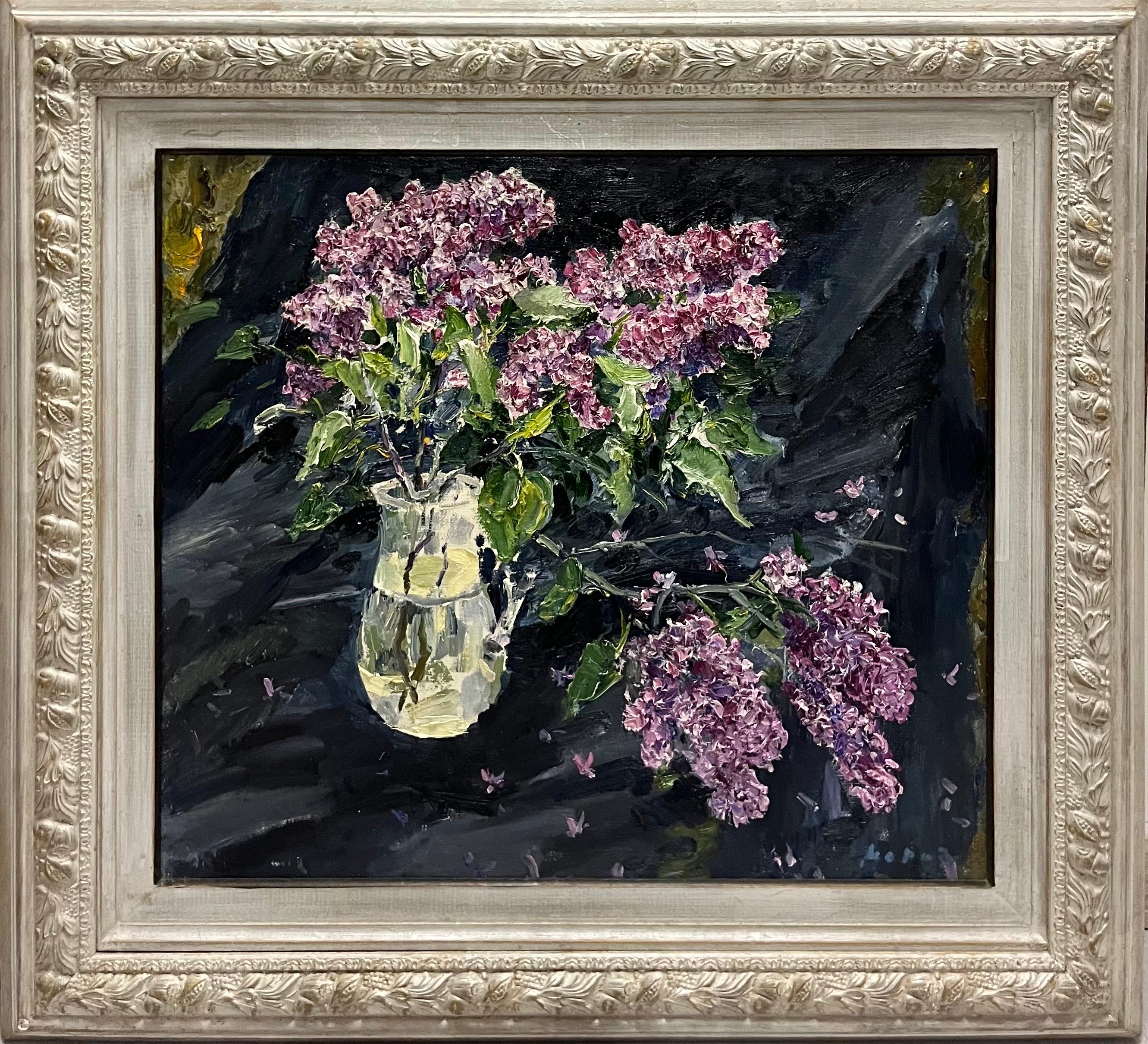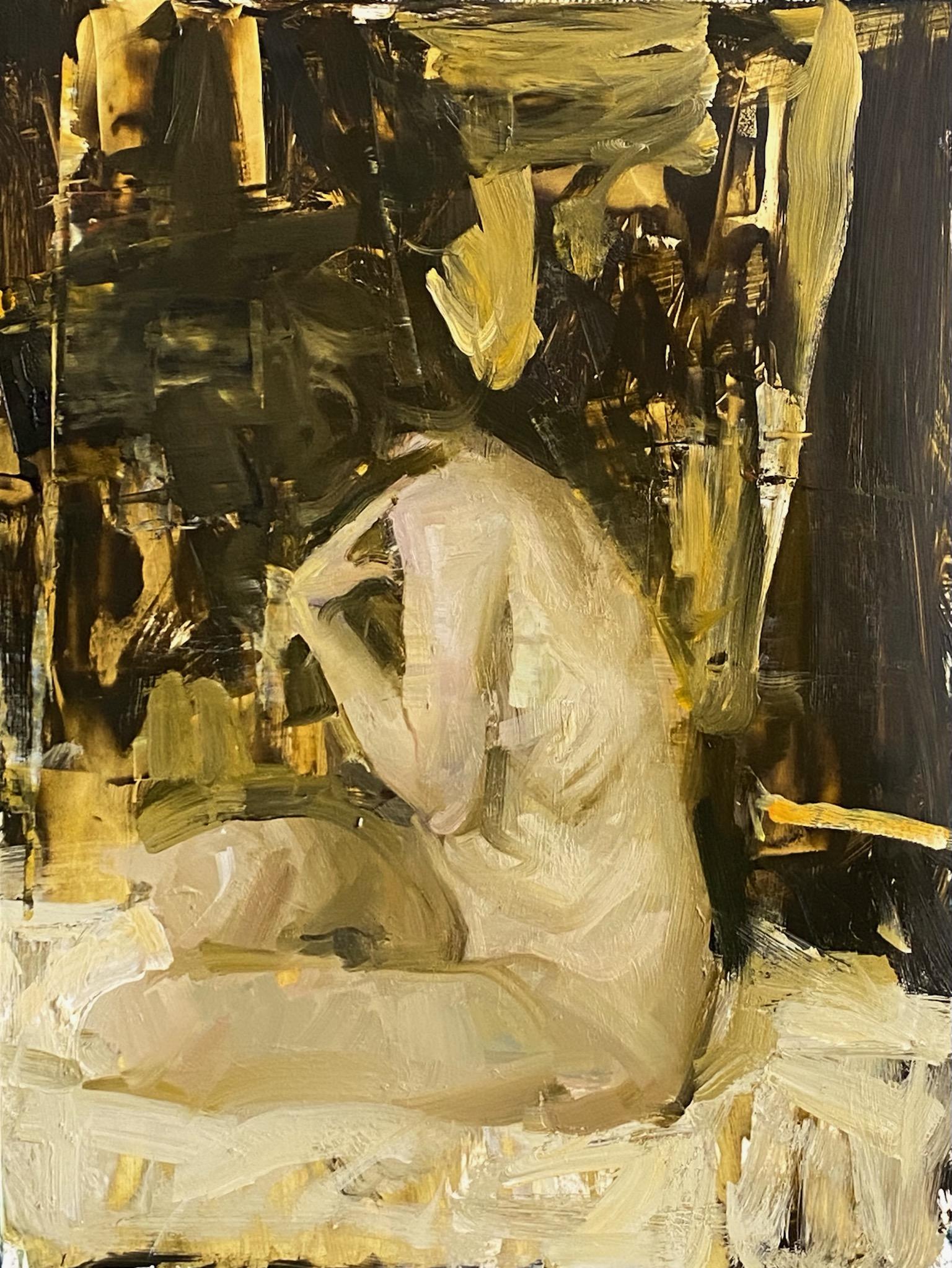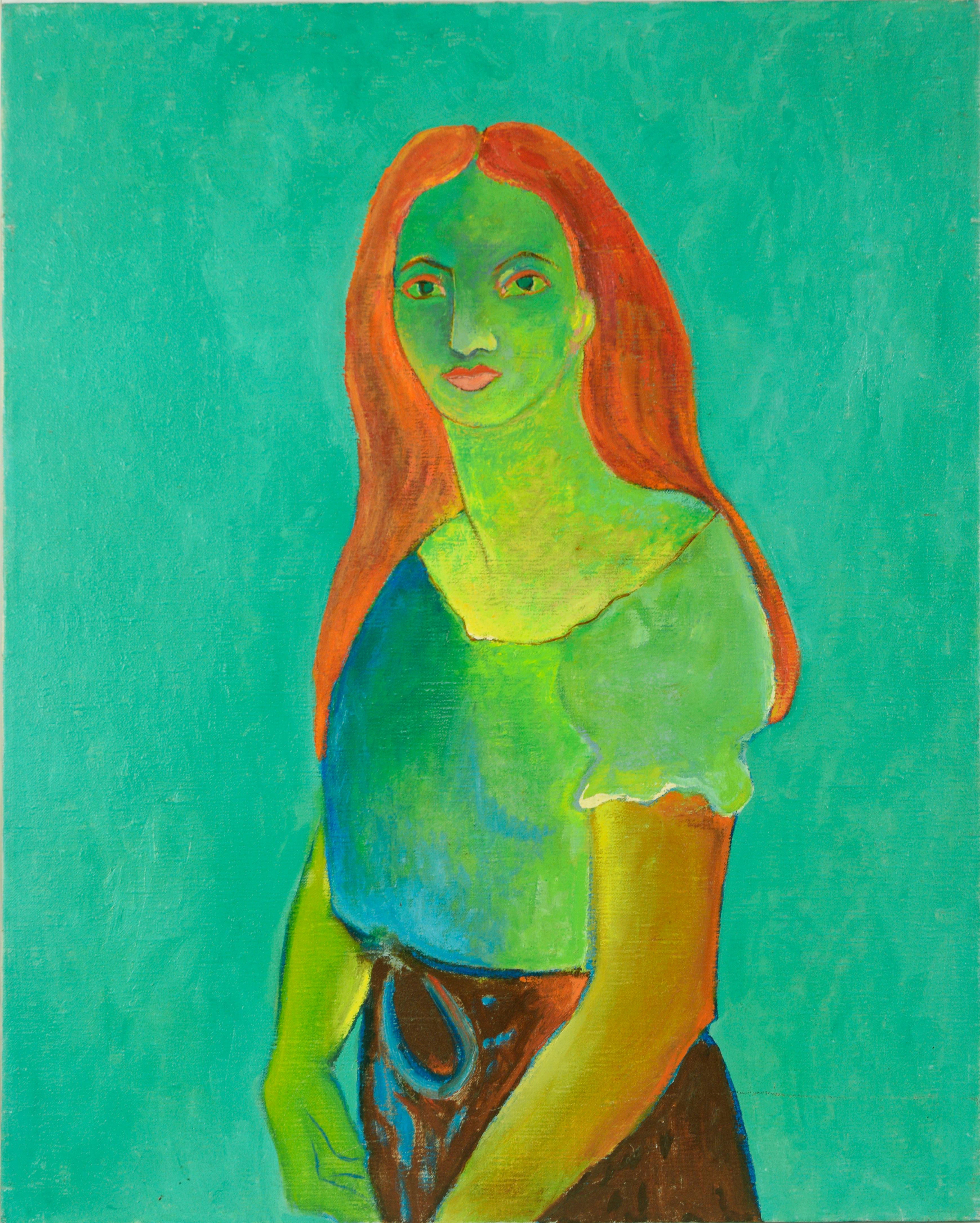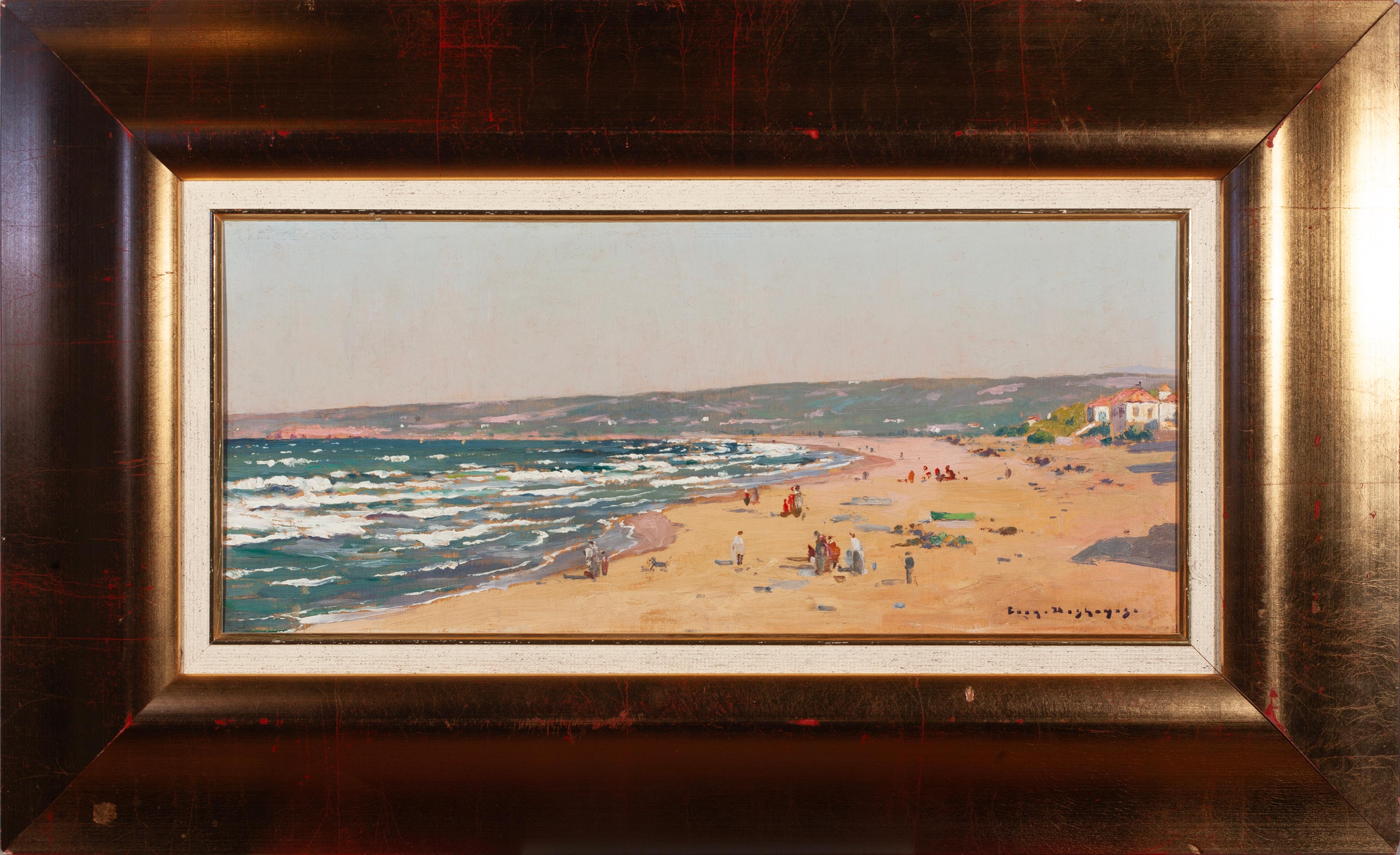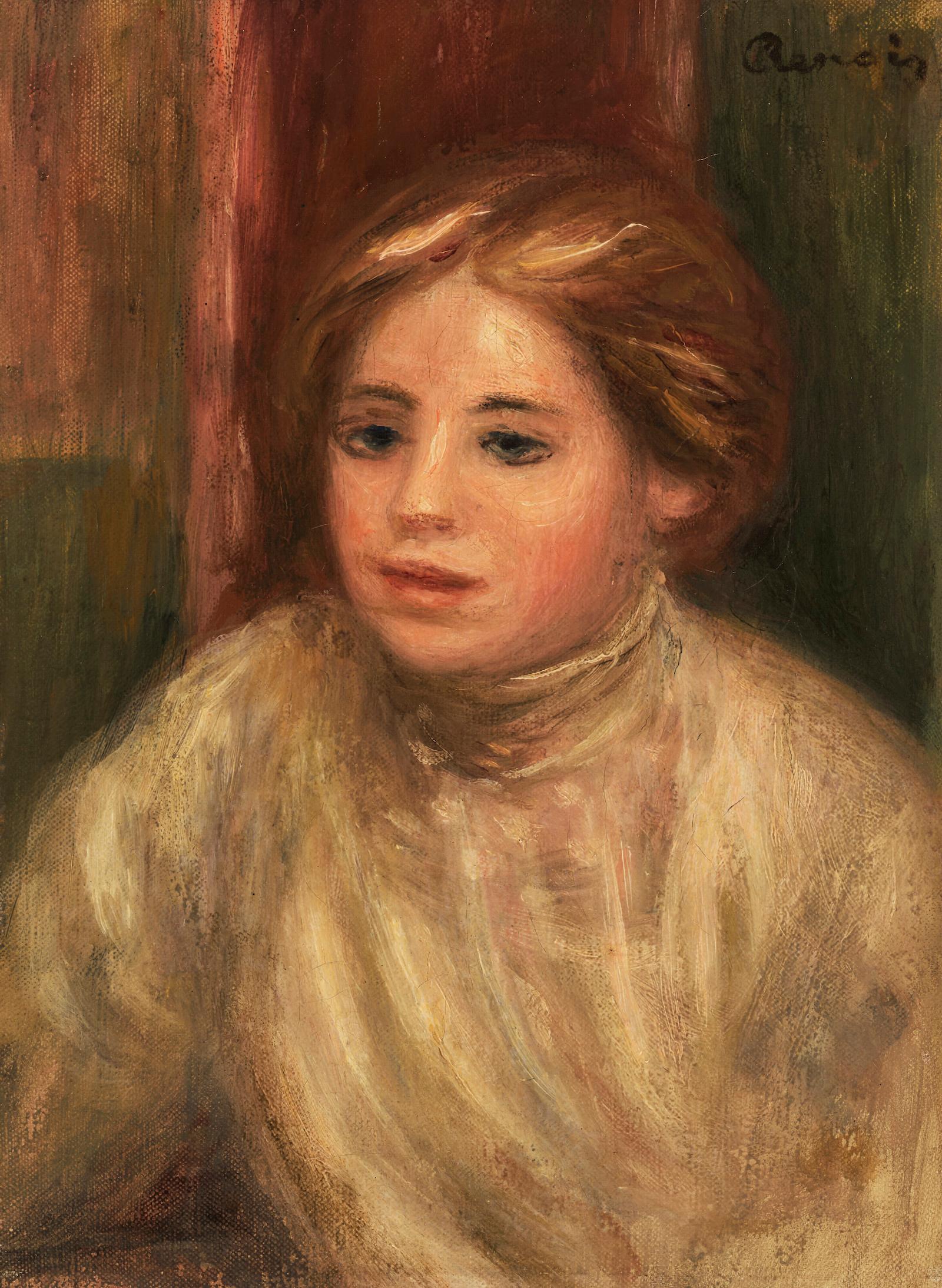Items Similar to Dancing Girls
Want more images or videos?
Request additional images or videos from the seller
1 of 8
Bencion (Benn) Rabinowitch Dancing Girls
About the Item
Bencion (Benn) Rabinowitch
Poland 1905 - Paris 1989
Dancing Girls
Oil on Board
14 ½ in. by 21 in. W/frame 21 ½ in. by 28 in.
He came from a rabbinic family, his father was an architect. The future artist, he studied drawing and painting since the age of 12. Since 1922 he worked alone in their hometown. In the years 1926-1930 he was a theater decorator. In 1927 he had his first exhibition in Bialystok, from 1928 exhibited in Warsaw. In 1929, he received a 3-year scholarship to study in Paris, where in 1930 he attended the studio of Fernand Léger.
He remained in Paris permanently changing citizenship to the French. He co-wide trend of international Ecole de Paris of the interwar period. He remained faithful to figuration with a penchant for geometric styling. During World War II, imprisoned with his wife in the transit camp, she avoided deportation with the help of Jean Paulhena and was by it being the end of the war. After the war, the artist took up the subject of the Bible, created m. In. a series of 126 illustrations for the psalms. These works were exhibited at the Museum of Modern Art of the City of Paris, the Museum of Lyon and elsewhere.
Art B64
- Creator:Bencion (Benn) Rabinowitch (1905 - 1989)
- Dimensions:Height: 21.5 in (54.61 cm)Width: 28 in (71.12 cm)Depth: 2 in (5.08 cm)
- Medium:
- Movement & Style:
- Period:
- Condition:
- Gallery Location:Sheffield, MA
- Reference Number:
About the Seller
3.7
Vetted Seller
These experienced sellers undergo a comprehensive evaluation by our team of in-house experts.
1stDibs seller since 2017
46 sales on 1stDibs
- ShippingRetrieving quote...Ships From: Sheffield, MA
- Return PolicyThis item cannot be returned.
More From This SellerView All
- Au CircusBy Dietz EdzardLocated in Sheffield, MADietz Edzard German, 1893-1963 Au Circus Oil on canvas 22 by 31 in. W/frame 32 by 41 in. Signed lower right Dietz Edzard was born in Bremen in 1893 Germany. He traveled extensive...Category
1930s Post-Impressionist Figurative Paintings
MaterialsOil
- The GlowLocated in Sheffield, MALOUIS GRANER Y ARRUFI (Spanish, 1863-1929) The Glow 1923 oil on canvas Signed & dated 23 lower left In a Fine Giltwood Carved Frame 33 by 25 ½ in. W/frame ...Category
1920s Post-Impressionist Interior Paintings
MaterialsOil
- Le Piège à OiseauxBy Georges d'EspagnatLocated in Sheffield, MAGeorges D'espagnat French, 1870 - 1950 Le Piège à Oiseaux Signed gdE (lower right) Oil on canvas 66 3/4 by 48 1/2 in. W/frame 70 ¾ by 52 ½ in. Born at Melun on 14th August 1870, G...Category
1910s Post-Impressionist Figurative Paintings
MaterialsOil
- Les VendangesBy Georges d'EspagnatLocated in Sheffield, MAGeorges d'Espagnat French, 1870 - 1950 Les Vendanges Signed gdE (lower left) Oil on canvas 67 by 43 in. W/frame 71 by 47 in. Born at Melun on 14th August 1870, Georges d’Espagnat...Category
1910s Post-Impressionist Figurative Paintings
MaterialsOil
- Jeune Femme AlongeBy Pierre CornuLocated in Sheffield, MAPierre Cornu French, 1895-1996 Jeune Femme Alonge Oil / Canvas 14 by 18 in. W/frame 20 by 24 in. Signed lower right Pierre Cornu was born November 16, 1895 in Salon de Provence. Born into a prosperous family of merchants oils and soaps, Cornu knows a pampered childhood and happy during which his attraction to drawing and color manifests itself fairly quickly. He will have the opportunity, throughout his life to be able to concentrate on his passion of painting. His paintings are often honored in all the great Parisian salons. He exhibits regularly with René Auguste Chabaud and Seyssaud in Marseille. Financial troubles forced him to emigrate several years in Morocco where he begins a new life, never abandoning painting, perfecting his art (abundance of beautiful colors, resembling oriental tapestries...Category
1930s Post-Impressionist Figurative Paintings
MaterialsOil
- BathersBy John Edward CostiganLocated in Sheffield, MAJohn Edward Costigan, N.A. American, 1888-1972 Bathers Oil on canvas Signed ‘J.E. Costigan N.A.’ lower left 20 by 24 in. W/frame 26 by 30 in. John Costigan was born of Irish-American parents in Providence, Rhode Island, February 29, 1888. He was a cousin of the noted American showman, George M. Cohan, whose parents brought the young Costigan to New York City and was instrumental in starting him on a career in the visual arts. They were less successful in encouraging him to pursue formal studies at the Art Students League (where, however, he later taught) than in exposing him to the commercial art world through the job they had gotten him with the New York lithographing firm that made their theatrical posters. At the H. C. Miner Lithographing Company, Costigan worked his way up from his entry job as a pressroom helper, through various apprenticeships, to the position of sketch artist. In the latter capacity he was an uncredited designer of posters for the Ziegfeld Follies and for numerous silent films. Meanwhile, he had supplemented his very meager formal studies in the fine arts with a self-teaching discipline that led to his first professional recognition in 1920 with the receipt of prizes for an oil painting and watercolor in separate New York exhibitions. A year earlier, Costigan had wed professional model Ida Blessin, with whom he established residence and began raising a family in the sleepy little rural New York hamlet of Orangeburg, the setting for the many idyllic farm landscapes and wood interiors with which he was to become identified in a career that would span half a century. John Costigan’s first national recognition came in 1922 with his winning of the coveted Peterson Purchase prize of the Art Institute of Chicago for an oil on canvas, “Sheep at the Brook.” It marked the start of an unbroken winning streak that would gain him at least one important prize per year for the remainder of the decade. The nation’s art journalists and critics began to take notice, making him the recurring subject of newspaper features and magazine articles. The eminent author and critic Edgar Holger Cahill was just a fledgling reporter when he wrote his first feature, “John Costigan Carries the Flame,” for Shadowland Magazine in 1922. Costigan had his first one-man show of paintings at the Rehn Gallery on New York’s 5th Avenue in November, 1924, to be followed less than three years later by another at the Art Institute of Chicago. In addition, Costigan’s work has been—and continues to be included, side-by-side with that of some of America’s most high-profile artists, in museum and gallery exhibitions throughout the country. His renown had peaked in the early 1930s, by which time his work had been honored with nearly every major award then being bestowed in the fine arts and had been acquired for the permanent collections of several prestigious American museums, including New York’s Metropolitan (which only recently, in 1997, deaccessioned his “Wood Interior,” acquired in 1934). Although Costigan’s celebrity had ebbed by the late 1930s, the Smithsonian Institution saw fit in 1937 to host an exhibition exclusively of his etchings. And, in 1941, the Corcoran Gallery (also Washington, D.C.) similarly honored him for his watercolors. (Another Washington institution, the Library of Congress, today includes 22 Costigan etchings and lithographs in its permanent print collection.) During World War II, Costigan returned briefly to illustrating, mainly for Bluebook, a men’s pulp adventure magazine. A gradual revival of interest in his more serious work began at the end of the war, culminating in 1968 with the mounting of a 50-year Costigan retrospective at the Paine Art Center and Arboretum in Oshkosh, Wisconsin. Oils, watercolors and prints were borrowed from museums and private collections throughout the country, and the exhibition was subsequently toured nationally by the Smithsonian Institution. John Costigan died of pneumonia in Nyack, NY, August 5, 1972, just months after receiving his final prestigious award —the Benjamin West Clinedinst Medal of the Artist’s Fellowship, Inc., presented in general recognition of his “...achievement of exceptional artistic merit...” in the various media he had mastered in the course of his career. This painting depicts one of the artist's favorite themes --the farm family bathing...Category
1950s Post-Impressionist Figurative Paintings
MaterialsOil
You May Also Like
- "Vaso di Lillà" Olio su Tela cm. 66 x 59By Georgij MorozLocated in Torino, ITVaso di lillà viola con fondo scuro che fa un effetto 3D , il vaso e i fiori molto materici danno l'impressione di fuori uscire dall'opera.Category
Early 2000s Post-Impressionist Still-life Paintings
MaterialsOil
- "Figure in Gold Abstraction", Oil PaintingBy Quang HoLocated in Denver, COQuang Ho's (US based) "Figure in Gold Abstraction" is an original, handmade oil painting that depicts a pale nude female model sitting among rumpled white fabric as she delicately pl...Category
2010s Post-Impressionist Figurative Paintings
MaterialsOil, Panel
- Mid Century Fauvist Portrait of Red Headed WomanBy Sydney HelfmanLocated in Soquel, CAStriking Fauvist portrait with a vibrant, high voltage color palette, featuring a green woman with red hair by Sydney Helfman (American, 1926-2010). Aut...Category
1960s Fauvist Figurative Paintings
MaterialsLinen, Oil
- Bord de mer animéLocated in Columbia, MOEugène-François Deshayes (1808–1875) was a French artist known for his landscape and marine paintings. He was born in Paris and initially trained as a lawyer, but his passion for art...Category
Late 19th Century Post-Impressionist Landscape Paintings
MaterialsOil, Panel
- Tête de Femme Blonde by Pierre-Auguste Renoir - Portrait paintingBy Pierre-Auguste RenoirLocated in London, GB*PLEASE NOTE UK BUYERS WILL ONLY PAY 5% VAT ON THIS PURCHASE. Tête de Femme Blonde by Pierre-Auguste Renoir (1841-1919) Oil on canvas 26.1 x 19 cm (10 ¹/₄ x 7 ¹/₂ inches) Signed upp...Category
Early 1900s Post-Impressionist Portrait Paintings
MaterialsCanvas, Oil
- La lecture au jardin (Lesson in the Garden)By Georges d'EspagnatLocated in New Orleans, LAFrench Post-Impressionist painter Georges d’Espagnat captures a charming moment between a mother and her child in this vibrant oil on canvas. Rendered with a studied use of complementary colors and bold brushstrokes, the painting showcases the artist's unique Post-Impressionist style. Remembered as one of the most individualistic artists of the 20th century, his distinctive canvases bring together the loose brushwork of the Impressionists and the bold color palette favored by the Fauves. Together, they achieve a vibrant spontaneity that lends itself well to the carefree subjects of the present work. Masterfully composed, La lecture au jardin moves beyond the Impressionist instinct to capture a fleeting moment on canvas. Rather, d'Espagnat succeeds in creating a deep feeling of harmony in the work. Warm colors are perfectly balanced with cool tones, while vertical and horizontal lines are softened by the curves of the foliage and his subjects' figures. Through his simplification of forms and intentional use of color and line, he creates a scene that is carefully designed and thoroughly modern. A similar view of a mother and her child by d'Espagnat is currently in the collection of the Metropolitan Museum of Art (New York). The Post-Impressionist painter was an individualist since his youth, choosing to forgo traditional schooling in order to independently study the Old Masters in the Louvre. He soon became involved with the most prominent Impressionist and Post-Impressionist painters of the age, including Pierre-Auguste Renoir and Paul Signac, who themselves existed outside the traditional norms of French Academic training. In 1891, he exhibited at the Salon des Refusés, and again the following year at the Salon des Indépendants. By 1895, he held his first one-man show in Paris, and just three years later his success earned him a solo show at the prestigious Durand-Ruel Gallery. Between 1905 and 1910 he made several trips to visit Renoir on the Côte d’Azur. Their close friendship resulted in a group exhibition at Marcel Bernheim...Category
Late 19th Century Post-Impressionist Portrait Paintings
MaterialsCanvas, Oil
Recently Viewed
View AllMore Ways To Browse
Vintage Dancer
Vintage Dancing
Vintage Dance Art
French Dance
French Dancer
3 Girls
Dancer Figure Drawing
Vintage Dancing Girls
Vintage Study Bible
Oil Painting 3 Girls
Illustration Vintage Camping
Vintage Bible Illustrations
Michael Lies
Rare Jewish
Young Girl Oil Painting 20th Century
Giotto Painting
Guitar Oil Painting
Lunch Painting
